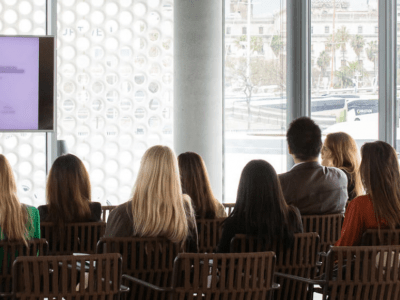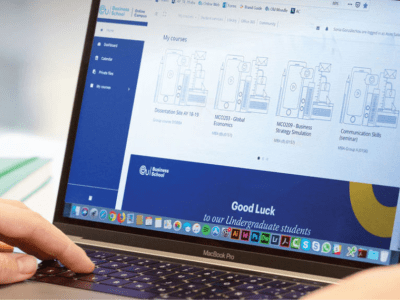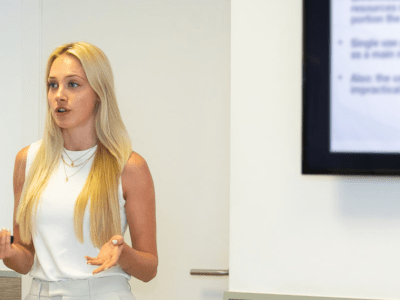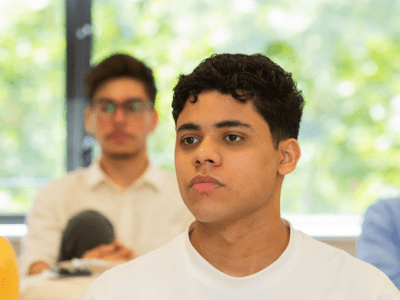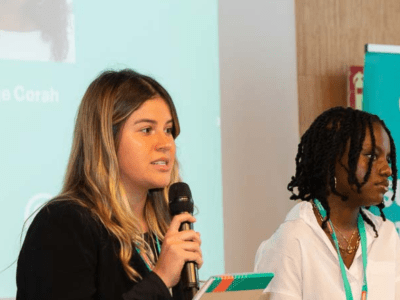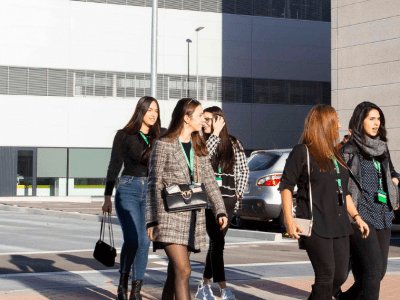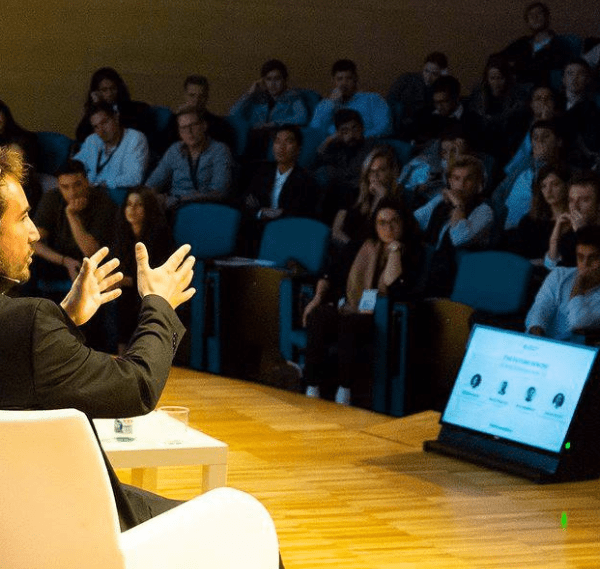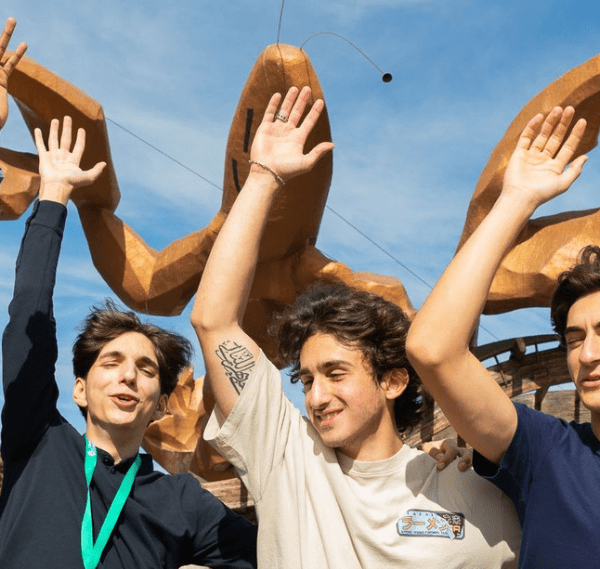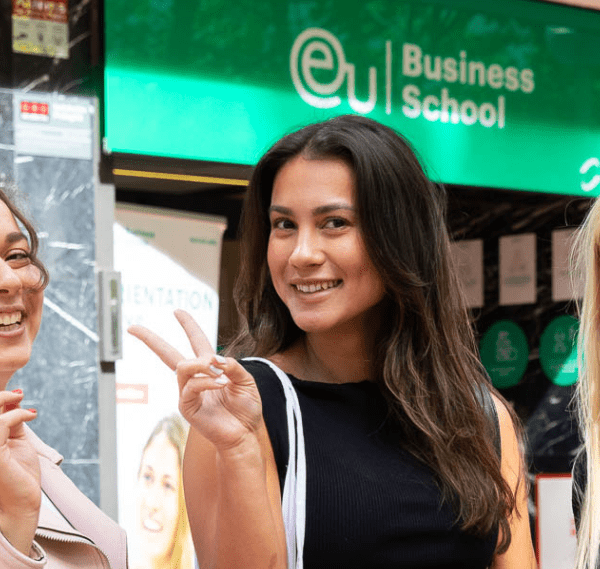During the turbulence of 2020 many of us turned to social media for breaking news and live responses to the pandemic. Ignacio Mendiboure, a Senior Marketing Manager at Twitter, spoke recently to EU Business School students about these online conversations, which he described as “shaping” the events of last year. He also delivered some practical advice for brands who wish to adapt their communication strategies for our current time of crisis. “It’s all happening on Twitter” was the key message that Ignacio conveyed. 2020 was a growth year for the online platform, which is primarily used for sharing ideas and for people to see what’s happening around their interests. Ignacio’s job is to help brands to tap into these conversations in order to generate greater sales and brand engagement.
Where Can Brands Connect To Culture?
Research from August 2020 showed that tweets about sports made up 3% of tweets on the platform. In comparison, 13% of tweets were dedicated to political topics. This suggests politics is the best topic brands can use to reach their customers. However, Ignacio emphasized that percentage was not the only consideration brands should take into account: engagement is also important. For example, sports tweets generate 2.4x the impressions that tweets about politics receive.
Other popular topics of conversation were home and family, gaming, music, television and COVID-19 itself. Within these categories, Ignacio explained that marketers should look at trending topics to see which conversations are commanding most attention. Recent sports conversation has focused on the return of professional sports leagues. He described the Twitter trending topics as replacing the roar of stadiums that are now empty due to pandemic restrictions.
In the gaming category, games like Animal Crossing and Fortnite generated unprecedented levels of interest on Twitter. One of the biggest music topics was Taylor Swift’s surprise release of her album Folklore, which was the focus of 3.7 million tweets. Unsurprisingly, the U.S. election dominated political conversations happening on Twitter; however, the Black Lives Matter movement also made a strong impression online. Within the television category, there was a steep rise in Twitter “watch parties” due to social isolation measures, and new releases from Netflix became exciting online events that stimulated conversation.
All of these subjects represented opportunities for brands to connect with a greater audience and achieve cultural relevance.
How Twitter Promotes Healthy Conversation for All
Twitter CEO Jack Dorsey has stated that he wants to “help increase the collective health, openness and civility of public conversation.” In order to achieve this, a number of initiatives have been introduced:
- The ability to follow topics. Now, instead of having to follow people, you are able to follow specific topics and see relevant tweets about them in your feed. This means you receive perspectives beyond your immediate follow circle, and you’re able to easily curate your feed to suit your specific interests.
- Conversation controls. Users are able to limit who can respond to specific tweets, meaning they’re able to have “private” conversations in public. It gives users the ability to control their own narrative, preventing the possibility of abusive or distracting responses.
- Banning political adverts. Based on the philosophy that political reach should be earned, not bought, Twitter has forbidden political advertising on its platform. This is in stark contrast to the approaches of other social media platforms like Facebook.
- Twitter Amplify. This feature enables 200+ brand-safe partners to connect to trending conversations on Twitter using original video content. Their advertisements are promoted alongside the most popular tweets.
What Makes Twitter’s Audience “The Most Valuable?”
Twitter represents a unique opportunity for advertisers because of what Ignacio calls “the Twitter mindset”. The idea is that since users access the site to learn, engage and discover, they are particularly receptive to the content they encounter there.
For example, it has been proven that Twitter users are more likely to search for information after exposure to an advertisement than users of Instagram or Facebook. They are also more likely to influence the people around them: 8/10 Twitter users consider themselves “opinion leaders”.
Case Studies
Ignacio outlined a number of case studies to show how brands have used Twitter successfully to engage and activate their audience.
One example was Ben & Jerry’s. During the Black Lives Matter protests of 2020, Ben & Jerry’s used their Twitter account to disseminate historical information regarding race relations in the U.S.A. This generated goodwill for the brand as it was seen to be taking a sincere stand at an important cultural moment.
Another example focused on Pampers and how they launched a series of educational videos about parenting in a pandemic. By considering what their customers needed and staying culturally relevant, they were able to promote their brand using Twitter.
Advice for Brand Communications in Times of Crisis
In times of crisis, brands often have to rethink their communication strategy at very short notice. Twitter has published a guide with practical advice on this subject. In his presentation, Ignacio shared some of their tips:
- It’s not just what you say, it’s what you do. Look for opportunities to lead by example and do the right thing.
- Use Twitter to keep up to date and get the pulse of the situation. A crisis means rapidly changing circumstances, which means that what may be appropriate one day is not appropriate the next.
- Think about your tone of voice. During times of crisis, people need empathy, honesty and thoughtfully applied humor. They may also look for a distraction from the situation.
- Stay in your lane. Keep doing what you’re doing well. Focus on core products and messages rather than overthrowing everything based on short-term thinking.
What Does Our Audience Need Right Now?
According to Ignacio, this is the fundamental question that should guide each brand’s approach to Twitter. The answers may include:
- Accurate and reliable information. 75% of coronavirus tweets are retweets, where people amplify expert voices, so there is clearly an appetite for this information.
- Health or wellbeing tips that can be implemented during the pandemic.
- Calming content, since this is an anxiety-inducing situation for many.
- Content that makes social distancing easier. One example given was when Disney released Frozen 2 earlier than expected, providing parents with much-needed entertainment for children stuck at home.
- Distraction and levity. It’s important to offer a release and an escape from difficult times.
- Community and positivity. Content sharing moments of connection and humanity has proven to be popular throughout this period.
Through Ignacio’s presentation, students were able to fully understand the unique offer that Twitter represents for businesses, as well as strategies to access its benefits by “tapping into” online conversations in the most effective manner.



